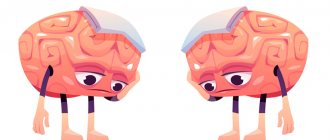Read the article and draw your own conclusions regarding all the words written.
Until we understand and feel what attachment is, we cannot understand how to get rid of attachment to a person or object.
Attachment can be so strong and subtle at the same time that it actually affects our entire lives.
Attachment is emotional support from a person or object in order to improve one’s own well-being.
We can only be attached to good emotions and good feelings. Many people become attached to their “soul mate ,” alcohol, tobacco, tasty and unhealthy food, and laziness. Some people become attached to the Internet and TV because they are sources of good emotions and security.
There is nothing wrong with affection or love. Therefore, there is no need to beat yourself up or scold yourself because of this . This is how it happened. You become attached, and there is nothing wrong with your attention being focused on enjoying something or someone. We enjoy life and that's completely normal.
What does emotional attachment mean?
Before we talk about methods of recognition and deliverance, we need to understand what emotional attachment to a person means. As a rule, this is a strong attraction and desire to be with the object, to appropriate it for oneself.
Reference! Experts say that this feeling is cultivated in a person from childhood.
Why condition is not the main thing
“Happiness is a state , and a person has no control over the state.
Freedom is an understanding that you can come to by chance and desire.
When you are free, you cannot be unhappy, and you are no longer interested in experiencing happiness - since this will be just another feeling against the backdrop of your freedom.
Therefore, freedom is much more fundamental and limitless than any happiness.
And it is precisely this kind of freedom that is happiness.”.©
Attachment is the habit of receiving good things from outside. But wealth shouldn't be your priority. The condition is always changing and always different. You shouldn't depend on it or get too hung up on it.
Conditions come and go . You don't have to take it from outside, take it from within. The condition should not be based on external factors.
Greater mutual understanding in the relationship between a man and a woman: psychology for building harmonious and happy relationships for both.
Vibrational attraction and love at first sight: an article about why we fall in love and how people are attracted.
How a guy can forget his ex-girlfriend if you broke up - reliable tips.
Is it possible to distinguish love from affection and how to do it
Often in a relationship with another person the question arises of what one individual experiences in relation to another. Can this feeling be called bright and sincere love, or is it an emotional attachment that is not supported by any significant sensations.
Reference! Most often, this question is asked by women, because due to their strong natural emotionality, they are not able to deal with this feeling on their own.
- attachment may appear due to some circumstances, or due to emotional pressure. Love is the kinship of two souls when both are comfortable with each other;
- if a person experiences attachment, he will tend to feel constant fluctuations: today he wants it, but tomorrow he doesn’t. The individual does not understand whether he needs a person. During love, a person is definitely confident in his feelings, he is constantly drawn to a person, regardless of the circumstances, and so on;
- People can experience melancholy both at a moment of strong attachment and when feeling pure love. The main difference is only that, being in love, a person tries to take a step towards, reduce the distance, get close to him as quickly as possible;
- during attachment, you want to constantly change your partner, make him more comfortable for yourself. When a person loves, he accepts all the shortcomings.
Strong attachment to a person: how to change a minus to a plus
Below are tips from Hal Shorey, Ph.D., who is a professor of clinical psychology at Widener University.
Write positive affirmations on cards.
An affirmation is a short positive statement, such as “I am attractive to girls” or “There are a lot of good people around me.” In the beginning, it doesn't matter whether you believe it or not.
If you're like many people, you've had a constant stream of negative thoughts running through your head for years. These pessimistic “tunes” play in the background like annoying chatter: “I’m a loser,” “All girls are the same,” “Love is suffering.”
- M+F 5 Misconceptions About Love Men Have to Get Rid of Some of them are toxic and unhealthy.
Often when you read cards with positive statements, you simply rewrite this “background music.”
If you don't believe this works, try to remember a time when you had a song from a stupid commercial playing in your head all day, even though you really didn't want to remember it. Has this ever happened? There is only one reason: repetition. Well, it's time to record a new jingle!
Become your own motivational coach
Many of us spend years uncontrollably criticizing ourselves or thinking negatively about others. When you do this, you reinforce negative, anxiety-producing pathways in your brain. Therefore, try to begin to be aware of these moments and stop the negative statements of your inner voice.
Practice telling yourself things like, “I can do this and everything will work out just fine,” “Happiness is just around the corner,” and “Tomorrow will be a great day.” Researchers have found that people who are optimistic about the future use positive self-talk when tackling challenging tasks.
- FAQs How to become an optimist: 10 tips to help you start enjoying life. Useful recommendations on how to change your way of thinking and tune in to the positive.
Learning to talk to yourself as a friend, rather than a subordinate who always gets everything wrong, will help not only change your attachment patterns, but also improve your overall psychological well-being.
Work with the mirror
Be warned, the next task from Dr. Shorey may sound a little strange. He suggests staying alone in a room, looking at yourself in the mirror, straight into your eyes, and saying as sincerely as possible: “I love you.”
As the psychologist recalls, when he did this for the first time, he could not keep a serious face or stop laughing. However, after some time, I began to say this with genuine sincerity and feel completely natural. Try it too!
Remember that your emotional system only accepts incoming data. She doesn't care where they come from. The main thing is that at this moment she recognizes that someone is looking at you and saying: “I love you.”
- Lifestyle How to accept and love yourself: a guide to caring for a cool guy named “you” Why lack of self-love is harmful and advice from psychologists to help you accept and value yourself.
People have a wide range of reactions to this task, and some of Shorey's clients have told him they could never bring themselves to do it. But he suggests looking at the situation this way: if it's pointless and stupid, then why is it so hard for you to do it? We promise we won't tell anyone.
What types of attachment exist?
Since this feeling is formed from early childhood, psychologists are accustomed to sharing attachment using the example of children. Temperament, habits and foundations are formed precisely at this age, therefore the main theory of attachment separates several main types of attachment.
Affective type of attachment
Psychologists are accustomed to classify this type of attachment as a neurotic disorder. If we look at the example of a child, this is expressed in a strong and unhealthy attachment to the mother. Like a toddler, teenager or adult child is not able to independently solve a problem or make a decision. He needs his mother's opinion.
It is quite easy to determine. For example, the mother's separation leads to screams and hysterics, and her appearance leads to joy and happiness. But positive emotions are short-lived and soon the child begins to reproach the parent and put pressure on him for abandoning him.
Ambivalent type
This is typical for individuals whose upbringing was very strict and “tight-knit.” Children who did not receive the necessary affection and warmth became hostages of such feelings. This type of attachment can be very dangerous in the future and develop into a more serious type of attachment. The individual will want to receive emotions and love from other, strangers. It manifests itself in the following:
- hyperactivity;
- control of environmental activities;
- severe anxiety and uncertainty in one’s actions;
- tendency to breakdowns and hysterics;
- incomprehensible “emotional swings” in relation to parents and friends.
The Key to Reprogramming Your Attachment Pattern
Attachment patterns are fairly stable, and research suggests that about 70-80% of people do not experience significant changes in their attachment style over time. This is great news if you're a secure type, but what if you're one of those whose attachment patterns get in the way of healthy, happy relationships?
Alas, it is not possible to switch from one style to another in one day, but the situation is by no means hopeless. However, before we give you tips on what to do, let's talk about the tool you'll be using. Namely, about the brain.
- FAQs A professional chess player revealed 3 ways to build self-confidence. Take note, this will definitely come in handy.
Have you ever heard that we only use 10% of our brain? Well, that's an obvious lie. Most of the time we use it entirely. What this statement actually means is that a relatively small part of our brain is directly involved in what we think of as conscious information processing.
Most processes in the brain are automated and take place outside of our consciousness. For example, if someone throws a ball at your head, your hand will automatically rise in an attempt to catch or avoid it without having to consciously plan the movement.
Physiological components of emotional systems also operate outside of awareness. Human emotions are, for the most part, governed by an area of the brain called the limbic system.
However, let's not go into anatomy - let's just say that our emotional systems react to incoming data, but do not care about where they come from - from reality or imagination.
Because of this, emotional experiences can be intentionally changed through mental images and your own inner voice from negative to positive. New memories and emotions literally rewire the brain—fortunately, it adapts very easily.
Those connections that you often use are strengthened, and those that are not in demand are cut off and weakened. So, if you're stuck in a cycle of memories of a painful relationship in the past or fantasies of an unhappy love, these circuits will be activated when you try to communicate with a pretty girl, preventing you from getting closer to her.
It's time to reverse this trend by strengthening the positive pathways and weakening the negative, anxiety-producing ones. Repeated positive imaginary experiences combined with positive emotions will create new memories and activate the pleasure centers in your brain.
So, we've sorted out the theory, now let's move on to practice.
How to recognize emotional attachment in yourself
Anyone can become a victim of emotional addiction. How to recognize it in time?
Signs
The main signs that will help determine emotional attachment:
- inadequate self-esteem. It can be either overestimated or underestimated. A person cannot appreciate his place in society;
- dependence on the opinions of others;
- problem with defining personal boundaries;
- inability to distinguish real from false emotions;
- experiencing toxic emotions in the form of guilt and shame;
- obsessive judgments and attitudes in the head;
- inability to create a healthy relationship with a partner;
- severe health problems;
- constant manifestation of a defensive reaction in the form of aggression or tears.
These are the main reasons for emotional attachment.
Article:
Attachment is a deep connection between a child and his or her caregiver.
It profoundly influences a child's development and ability to express emotions and build relationships. If you are the parent of a child with an attachment disorder, you may already be exhausted from trying to connect with them. A child with insecure attachment or attachment disorder lacks the skills to form deep relationships. However, with the tools provided here and a healthy dose of patience and love, you can overcome your attachment problems. The essence of attachment problems and its disorders
Children with attachment disorders or other attachment problems have difficulty forming relationships with people and managing their own emotions. This leads to a lack of trust and self-esteem, fear of becoming close to someone, anger and the desire to control everything. A child with an attachment disorder feels lonely and does not feel safe.
So why do some children develop attachment disorders and others do not? The answer lies in the process of attachment formation, which relies on the interaction of both parents and child.
Attachment disorders are the result of negative relationship experiences. When children constantly feel abandoned, isolated, helpless, or unwanted for any reason, they learn that they cannot rely on others and that the world is a dangerous and scary place.
What Causes Reactive Attachment Disorder and Other Attachment Problems?
Reactive attachment disorder and other attachment problems occur when children are unable to establish stable connections with parents or surrogates. This can happen for many reasons:
- The child cries, but no one reacts to this or creates comfortable conditions for him.
- The child, being hungry or wet, remains unattended for several hours.
- No one looks, talks, or smiles at the child, so the baby feels lonely.
- A young child only receives attention when exhibiting extreme behaviors and excessively strong emotions.
- The child is being abused or violated.
- Sometimes the child's needs are met, and sometimes not. A child never knows what to expect.
- An infant or young child is hospitalized or separated from their parents.
- An infant or young child is passed from one caregiver to another (may be through adoption, or the loss of a parent).
- The parent is emotionally unavailable due to depression, illness, or drug addiction.
As the examples show, sometimes the circumstances that cause attachment problems are unavoidable, but the child is too young to understand what happened and why it happened. He just feels like no one cares about him and as a result he loses trust in people and the world becomes an unsafe place.
Early warning signs and symptoms of insecure attachment
Attachment problems range from relatively simple forms to the most severe, such as reactive attachment disorder (RAD).
While it's never too late to treat attachment problems like reactive attachment disorder, the sooner you notice the symptoms and take action on them, the better. With early detection, you can avoid more serious problems. Having appeared in infancy, attachment problems are often easy to correct with qualified help and support.
Signs and symptoms of insecure attachment in young children:
- Avoids eye contact
- Doesn't smile
- Doesn't reach out to pick up an object
- Rejects your attempts to reassure, console, and connect.
- Doesn't seem to notice or care when you leave him alone
- Cries inconsolably
- Does not babble or make other sounds
- Doesn't follow you with his eyes
- Not interested in interactive games or toys
- Spends a lot of time rocking or soothing himself
It's important to note that early symptoms of insecure attachment are similar to early symptoms of other problems such as ADHD and autism. If you notice any of these warning signs, contact your pediatrician immediately for a professional diagnosis of the problem.
Comforting a Crying Baby Many people typically feel frustrated, anxious, and even angry when confronted with a crying baby, especially if the baby has been crying for hours on end. In these situations, you need to be calm and focused on understanding what is going on with your baby and how best to calm him or her.
Signs and symptoms of reactive attachment disorder
Children with reactive attachment disorder are so traumatized early in life that their future relationships are also disrupted. They have difficulty relating to other people and are often developmentally delayed. Reactive attachment disorder is common in children who have been abused and who have frequently changed foster families, lived in foster homes, or were separated from their primary caregiver after bonding.
Common signs and symptoms of reactive attachment disorder
- Aversion to touch and physical affection . Children with reactive attachment disorder often flinch, laugh, or even say “ouch” when touched. Instead of inducing positive feelings, touching and caressing is perceived as threatening.
- Control problems . Most children with reactive attachment disorder maintain great distance in relationships to maintain control and avoid feelings of helplessness. They are often naughty, brash, and good at argumentation.
- Anger problems . Anger can be expressed directly in the form of tantrums or acting out, or it can be expressed through manipulation and passive-aggressive behavior. Children with reactive attachment disorder tend to hide their anger with socially acceptable actions, such as giving a strong high five that hurts or hugging someone too tightly.
- Difficulty expressing genuine care and love . For example, children with reactive attachment disorder may be overly affectionate with strangers but show little or no affection towards their parents.
- Underdeveloped conscience . Children with reactive attachment disorder tend to act as if they have no conscience. They do not express guilt, regret or remorse after unacceptable behavior.
Suppressed form of reactive attachment disorder and disinhibited form of reactive attachment disorder As children with reactive attachment disorder get older, their symptoms often develop into either a suppressed or disinhibited pattern.
- Symptoms of a suppressed form of reactive attachment disorder . The child is emotionally distant and resistant to consolation. The child is aware of what is happening around him, he is even hypervigilant, but does not react or respond. The child tends to push others away, ignore them, or become aggressive when others try to approach.
- Symptoms of the disinhibited form of reactive attachment disorder . The child does not give preference to his parents over other people, even strangers. The child seeks comfort and attention from almost every person, without making any distinctions. He is extremely dependent, acts much younger than his age, and is prone to chronic anxiety.
Raising a Child with Reactive Attachment Disorder: What You Need to Know
Raising a child with insecure attachment or reactive attachment disorder can often be exhausting, frustrating, and emotionally taxing. It is difficult to feel like a good parent without a loving connection with your child. Sometimes you may wonder if your efforts are worth anything, but rest assured that they are. Over time, with patience and concerted efforts with other parenting participants, attachment disorders will be eliminated. The key is to remain calm but firm when interacting with your child. This will show your child that they are safe and that you can be trusted.
A child with an attachment disorder is already under a lot of stress, so it is essential that you manage your own stress levels before you try to help your child.
Tips for raising a child with reactive attachment disorder or insecure attachment
- Set realistic expectations . Helping a child with an attachment disorder is hard work and takes a lot of time. Focus on small steps forward and celebrate each step towards success.
- Patience is essential . The process will not be as fast as you want, and you will certainly encounter difficulties along the way. But by being patient and focusing on even small improvements, you create a safe environment for your child.
- Encourage a sense of humor and joy . Joy and humor will help solve attachment problems and fill you with energy even in the midst of a difficult period. Find a job and at least a couple of people with whom you can laugh and feel good.
- Take care of yourself and manage stress . Cut down on the things that take up your time and give it to yourself. Rest, good nutrition, and breaks from parenting will help you relax and recharge, allowing you to give your baby the attention you need.
- Find support and ask for help . Rely on friends, family, and respite care providers. It's best to seek support before it becomes necessary to avoid extreme levels of stress. Also consider joining a parenting support group.
- Stay positive and don't lose hope . Be sensitive to the fact that children are responding to your feelings. If they sense that you are desperate, it will make them feel desperate. When you feel down, turn to other people for comfort.
Note to parents of adopted children or foster families with children with reactive attachment disorder
If you have adopted a child, you may not have known about reactive attachment disorder in your child. Your new child's anger or indifference may be painful and difficult to understand. Try to remember that your adopted child is not acting this way out of a lack of love for you. His life experiences have not prepared him to connect with you, and he cannot yet recognize you as a source of love and comfort. Your efforts to love your child will have an impact—it just may take some time.
Treating Reactive Attachment Disorder: Tips for Helping Your Child Feel Secure
Security is a major concern for children with reactive attachment disorder and other attachment problems. They are alienated and distrustful because they do not feel safe in this world. They remain vigilant to protect themselves, but this also prevents them from accepting love and support. Therefore, first of all, it is important to create a sense of security in the child. You will achieve this by setting clear expectations, rules of conduct and consistent responses. This way, your child will know what to expect when they behave in a certain way.
- Set limits and boundaries . Consistent, loving boundaries make the world a more predictable and less scary place for children with attachment problems such as reactive attachment disorder. It is important that they understand what behavior is expected of them, what is acceptable and what is not, and what the consequences will be if they break the rules. It will also teach them that they have more control over what happens to them than they think.
- Respond but remain calm when your child is upset or does something wrong . Remember that "bad" behavior means that your child doesn't know how to deal with his feelings and that he needs your help. By remaining calm, you show your child that feelings can be managed. If he is being deliberately defiant, go through with all the predetermined consequences in a cool, matter-of-fact manner. But never raise a child with an attachment disorder when you are in an emotionally unstable state. This will make the child feel unsafe and may even reinforce bad behavior by making it clear to him what buttons can be pushed.
- Be prepared to immediately reconnect and be available after a conflict . Conflict is particularly distressing for children with insecure attachment or attachment disorder. After a conflict in which you disciplined your child, be prepared to reestablish contact as soon as your child is ready. This will reinforce your consistency and love in your parenting, and will help your child develop trust in you.
- Admit your mistakes and work on them . When you allow frustration or anger to get the better of you, or do something that you perceive to be uncaring and uncaring, correct the mistake as quickly as possible. Your willingness to take responsibility and make amends will strengthen the attachment and bond between you and your child. Children with reactive attachment disorder or other attachment problems need to learn that although you are not perfect, you love them no matter what.
- Try to maintain a predictable routine and schedule . A child with an attachment disorder may not be able to rely instinctively on loved ones and may feel threatened by changes and contradictions, such as when traveling or during school holidays. A familiar routine or schedule will provide comfort during changes.
Treatment for Reactive Attachment Disorder: Tips to Help Your Child Feel Loved
A child who has not bonded with a parent early in life will find it difficult to accept love, especially its physical manifestations. But it is in your power to help him learn to accept love over time, provided that he is consistent in his upbringing and reproduction of the same patterns. Trust and security come when the child sees loving actions, hears soothing words, and feels comfort over and over again.
- Choose what your child likes . If possible, show your love for your baby through rocking, hugging, and holding—experiences your baby hasn't had before. But be careful whether the child feels good and comfortable. In cases where the child has experienced violence and trauma, you will have to move quite slowly because the child tends to resist physical touch.
- Respond according to the child's emotional age . Children with attachment disorders are characterized by behavior characteristic of a younger age, both socially and emotionally. In this regard, you will have to treat the child as if he was much younger, often using non-verbal methods of calming and comforting.
- Help your child identify emotions and express their needs . Children with attachment disorders may not know how they feel or how to ask for what they need. Reinforce the idea that it is okay for your child to feel any feelings and show them healthy ways to express emotions.
- Listen, talk and play with your child . Set aside a time when you are able to give your child your full attention in a way that is comfortable for him. It may seem difficult to drop everything, eliminate all distractions and simply be present in the moment, but time spent together provides a wonderful opportunity for your child to open up to you and feel your attention and care.
Treatment of reactive attachment disorder: tips on how to keep your child healthy
Healthy eating, sleeping patterns and regular exercise are always important, but especially so for children with attachment issues. Healthy habits will go a long way toward reducing your child’s stress levels and even out mood swings. When children with attachment disorders are relaxed, well-rested and comfortable, they will have a much easier time coping with life's challenges.
- Nutrition . Make sure your child's diet includes whole grains, fruits, vegetables and meat. Reduce your sugar intake and add plenty of healthy fats, found in fish, flax seeds, avocado and olive oil for optimal brain health.
- Dream . If your child gets tired during the day, it will be extremely difficult for him to concentrate on learning new things. Make his sleep schedule (bedtime and wake-up time) consistent.
- Exercises . Exercise or any type of physical activity is a great antidote to stress, frustration and pent-up emotions, as the endorphins released during exercise create positive feelings in the child. Physical activity is especially important for a child who is angry. If your child is inactive, try several different sports or other activities to find something that appeals to him.
Any of these tips—about nutrition, rest, or exercise—can turn a difficult day with a child with an attachment disorder into a happy one. These foundations will create the foundation for the healthy development of the child’s brain, and will make him ready to make contact.
Professional treatment for reactive attachment disorder
If your child suffers from a severe form of attachment disorder, particularly reactive attachment disorder, seek professional help. Additional support will ensure faster positive changes in your child's life, and the sooner you seek help, the better.
If you suspect your child is struggling with attachment issues, start by consulting with your pediatrician and a child development specialist.
Types of Treatment for Reactive Attachment Disorder
Treatment for reactive attachment disorder typically involves a combination of psychotherapy, counseling, and parenting designed to provide the child with a safe environment, develop positive interactions with caregivers, and improve relationships with peers.
Medication is sometimes used to treat underlying problems such as depression, anxiety, or hyperactivity, but there is no quick fix for reactive attachment disorder. Your pediatrician will recommend a treatment plan that includes:
- Family psychotherapy . Typical treatment for attachment problems involves both the child and the child's parents or caregivers. Psychotherapy often includes fun and rewarding activities that enhance attachment and help parents and other children in the family understand the symptoms of the disorder and take effective action.
- Individual psychological counseling . Therapists may work with the child alone or with parents as observers. This is designed to help the child directly learn to control emotions and behavior.
- Play therapy . It will help the child master skills of interaction with peers and behavior in other social situations.
- Services of a specialist in an educational institution . Specially designed programs at your child's school will help him learn the skills needed for academic and social success while dealing with behavioral and emotional problems.
- Courses for parents and educators . These are special courses for parents and childcare providers, where you will learn about attachment disorders, as well as the necessary skills for raising such children.
Why people become attached to each other
After a person has determined that he has emotional dependence or attachment, he should understand what contributed to this.
Causes
As a rule, the root cause cannot be identified. All problems come from early childhood, when a person with an unformed psyche goes into society. The attitude of others towards him can have a detrimental effect on his self-realization, which later leads to attachment. He is looking for something that he did not receive then, but due to his personal lack of education he cannot help himself.
How to deal with emotional addiction
Some tips to combat addiction:
- reevaluate yourself and the importance of a person in life;
- contact a specialist;
- work through personal problems and overcome them;
- look at your life from a different angle and prioritize more correctly;
- find the cause of emotional dependence.
You can get rid of a psychological problem only by working through it. Otherwise, the individual will receive an unfavorable result, which will have a detrimental effect on the general condition and health of the person.
Letting go of attachments: stop taking your condition from outside
Outwardly people can be very rich, but internally they are very empty ! I'm not saying to throw away everything external, let it be - it doesn't bother anyone.
Just stop boosting your mood with external objects and paraphernalia.
For example, the idea of a guy having a girlfriend makes him feel better every day. He needs to stop thinking about the fact that he has a girlfriend from the very beginning of the day. as much as possible from the idea that you have something in this world . Find a small moment in your head that allows you to enjoy and discard it. You just stop thinking about him. You just stop enjoying it.
Do it all little by little, not all at once. It's like a diet.
You will feel worse at first . But it is necessary. Throw away attachments from your life, no matter how hard it may be at first.
Live by the idea that you are already okay . You keep throwing away and removing attachments from your life.
You have a loved one, but you should not extract emotions from him in order to improve your fortune.
Over time, you will learn not to think that you have it. At the same time, you will not be afraid of losing it. Ultimately, you will be able to get rid of love addiction. You no longer need to suck out fortunes from somewhere, because your condition is already better . Thanks to self-development, you find the reasons why you depend on something, throw them away - this increases your inner state, your inner self-esteem. You begin to love yourself more and be more independent.










